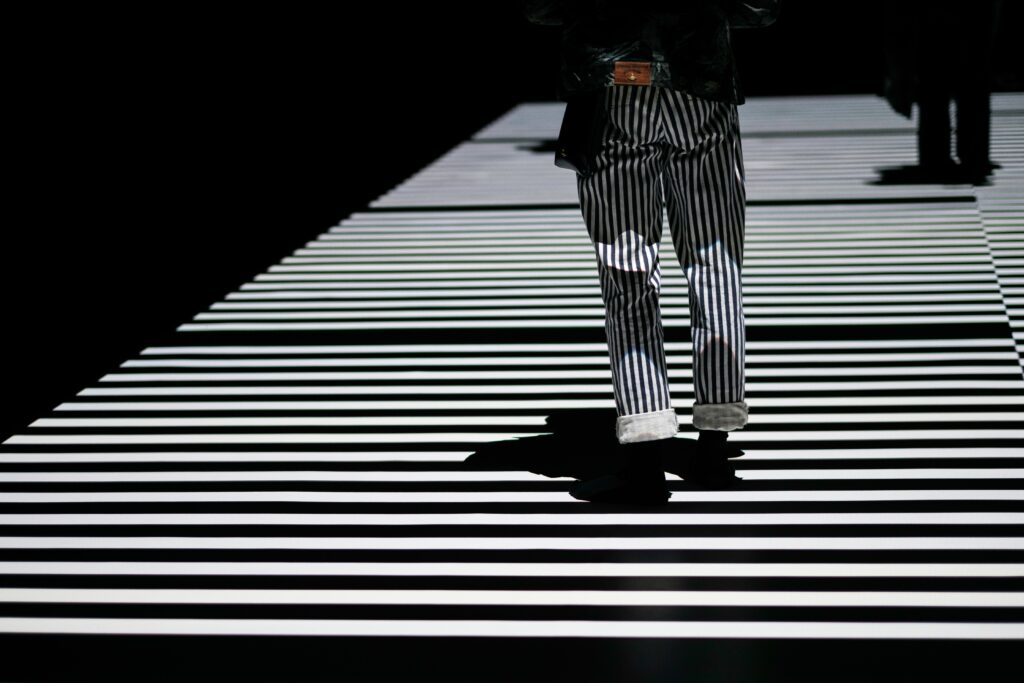
Foreground is used in many types of photography and is a great tool to give a tridimensional feeling to images. Foreground interest in street photography must be used with extreme care and control in landscapes, but it can also be used in various other fields of photography.
In this post we are going to talk about the use of foreground in street photography – especially when you might use it as a tool – and when to restrain yourself from using it.
Foreground Interest In Street Photography: A Compositional Tool

Foreground can be used in street photography as a great compositional tool to show space and scale.
In many street photographs, you can create universal scenes by presenting a close-up subject in its social context by using a shallow depth of field, or present the background as a universal ambiance.
Street photography is about social interaction in many cases. And by showing it as a unique scene in a democratized context, you can create a universal feeling with your images.
-
Scale
Another great use of foreground interest involves contrasting the scale of a subject contrasted with the physical dimensions of other objects in the scene.
Scale is a concept that is not well covered in photography literature these days. It refers to the size perception of an object or a subject when combined in a composition with another element.
By using foreground interest, you can easily show distance (thanks to scale) in a photograph. This is perfect for storytelling, and can be used as a great street photography tool.
-
Sub-Framing
Sub-framing is a compositional technique that takes advantage an existing frame in the environment. The frame can be a window or an organic frame created by trees.
Foreground interest is used when the sub-framed element is closer to the camera than the rest of the image, and the technique can create a very intimate feeling.
So Why Use Foreground Interest In Street Photography?

Foreground interest can be used to enhance an image's message, to define a particular point of view or perspective, or to pinpoint your personal interest in a subject or a group of people interacting in a scene.
When Is Foreground Interest Not Needed?

-
When You Want To Show Context In Your Photograph
Foreground interest is not always necessary. In street photography, there is a vast richness of context can be captured to tell a better story. Remember: you’re not only looking for portraits but for meaningful stories and contexts too.
Therefore, other elements surrounding a subject – ones that help tell the subject’s story – may be needed in the image. This doesn't mean necessarily that you’ll end up with two-dimensional images, but with the right focus and aperture setting the total context will reflect the complete message.
-
Use It When Keeping Distance
Street photography is more likely to occur with wide-angle lenses and walking instead of zooming. Of course, this is not a standard. I think street photography is a less-standard photography niche, but when you’re doing it, it is very useful to have small, unobtrusive gear with wide-angle optics.
Whichever option you love the most, you have to keep in mind that when framing a scene with rich context, especially when there is some distance between you and the subject, there is no need for foreground interest.
Foreground Interest In Street Photography Will Also Help You With…
-
Spatial Interest
One of the most iconic elements for which early photography is remembered is its ability to convey a richer sense of tridimensionality than painting (which started showing tridimensionality as it was meant to be in the sixteenth and seventeenth century).
Spatial interest is achieved when a close object is contrasted with the large space behind it. It can be enhanced with lines, so the reading of the photograph has a richer visual path.
-
Enhancing The Subject’s Importance

When you apply foreground interest, all the immediate attention will be drawn to the subject in focus at the closer distance within the whole focal scope of the picture.
By using foreground interest, you'll help the main subject appear as the protagonist, or at least the main focus of interest, in the picture.
Which Is The Best Way For Getting Rich Spatiality?
-
Hyper-Focal Distance
Hyper-focal distance is a term that may seem complex, but it’s not. I'll try to explain it the simplest way I can, and you'll see its important application in foreground and beyond.
The hyper-focal distance is the closest distance between the front element of a lens and the closest in-focus object when the camera is focused at infinity. Each lens has a different hyper-focal distance.
Summary
For me, one of the best examples of everything I mention above is Josef Koudelka's photo of the Invasion of Prague in 1968. The image is simple but extremely powerful.
Josef Koudelka is a talented photographer born in Moravia inside the region previously known as Czechoslovakia (today, the Czech Republic).
He is best known for his street photography and social documentary. He took this image at the exact moment when Prague was invaded by the Warsaw Pact military forces.
The watch is evidence of the moment when this occurred, and the lone streets behind this foreground object give us an idea of the general feeling of the streets in the city, setting the stage for what was about to happen.
We have an exclusive Guide to Composition for understanding how you can use it to improve your photography. Written by expert photographer and author Kent DuFault, this guide will certainly ensure you're photography is on track – no matter what style or genre.
Further Resources
- Leading Lines as a Compositional Tool for Better Photographs by Jason Row
- Be Shallow – A Guide to Wide Aperture Photography by Jason Row
- Use Your Social Skills For Intimate Photographs by Federico Alegria






